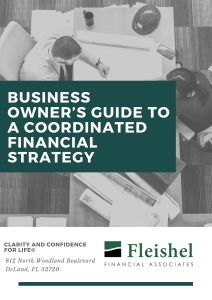The truth is, stocks are just as important for people nearing retirement. One primary principle in retirement planning is glide paths. This means that, when you’re young, you should invest most of your retirement savings in equities, which are more volatile and, in the long run, are likely to have higher rewards.
As you get older, investments should transition to something more stable, like cash and bonds. Less risk, yes, but that’s by design. When you’re close to retirement, you don’t have time to make up for a bad market, but that doesn’t mean you shouldn’t own any stocks.
Some people invest in target-date funds. That is, you choose a plan set up by whoever is managing your portfolio for your target retirement date. These are one-size-fits-all and automatically diversify from risky to less risky as you get nearer the target date. In the beginning, when you’re young, these investments are mostly stocks, then they slowly shift into other things as time passes.
That said, the shift is not as drastic as you might think. Some of the most popular plans maintain a good balance of stocks and bonds, still exposing the person to some risk. Why? Because people are living longer and their retirement plans have to try to last as long as possible. They need both savings to draw from when needed and investments that have time to grow.
The right balance in a glide path means that your account is properly diversified and that you shouldn’t have to worry about making any moves when the market takes a downturn. If your retirement account is properly diversified, you should be able to ride out sell-offs. Plans that are put together when things are calm should not be abandoned when the market demonstrates volatility. Give your investments the time they need to ride it out.
The S&P 500 is an unmanaged index of 500 widely held stocks that is generally considered representative of the U.S. stock market. Indices are not available for direct investment. Any investor who attempts to mimic the performance of an index would incur fees and expenses which would reduce returns.
Every investor’s situation is unique and you should consider your investment goals, risk tolerance and time horizon before making any investment. Prior to making an investment decision, please consult with your financial advisor about your individual situation. Holding investments for the long term does not insure a profitable outcome. Investing involves risk and you may incur a profit or loss regardless of strategy selected. Past performance may not be indicative of future results. This material is being provided for information purposes only and is not a complete description, nor is it a recommendation. Expressions of opinion are as of this date and are subject to change without notice.





0 Comments